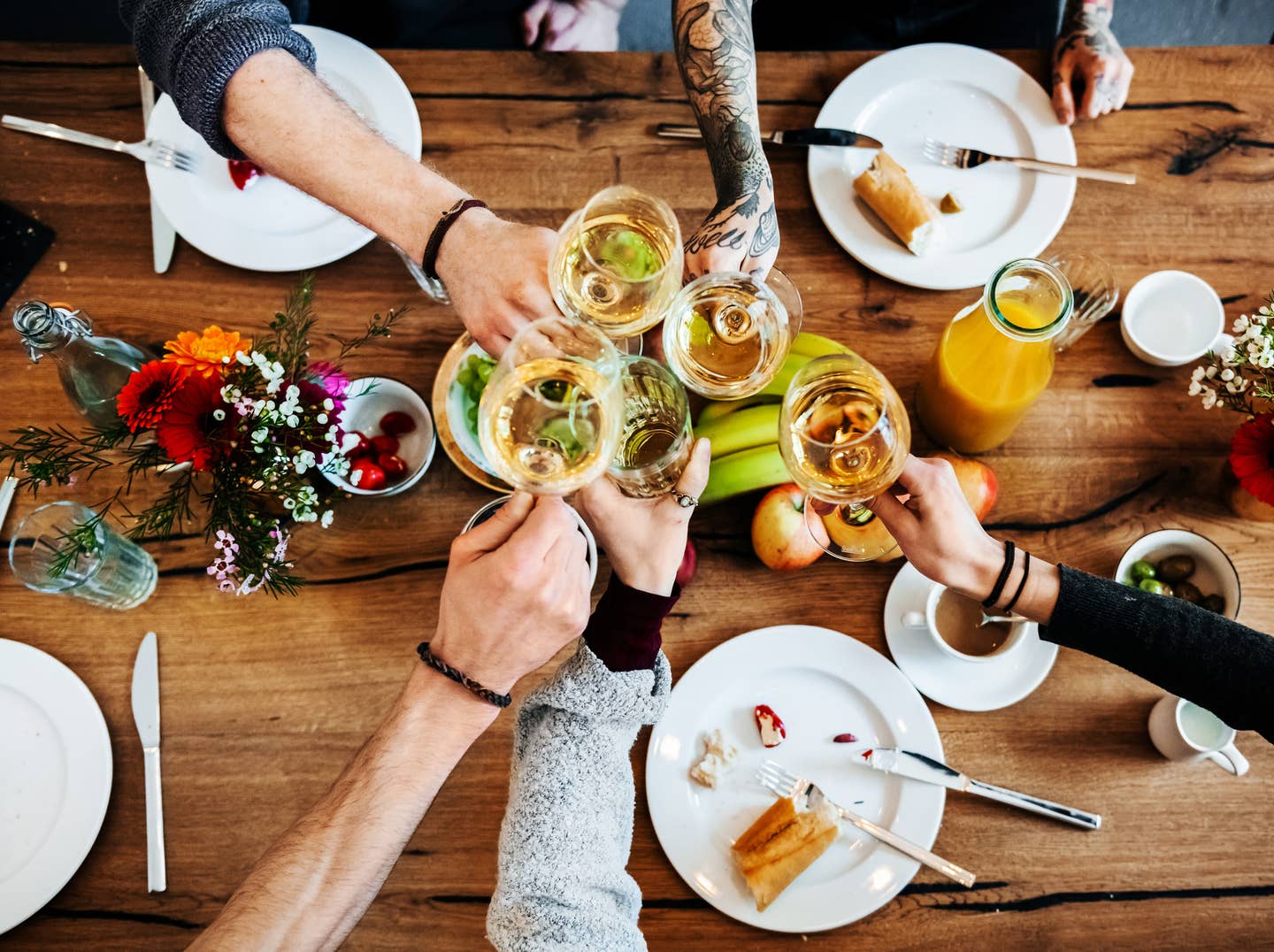
“The Veggie” from The New York Times Explores the Joys of Vegetarian Food
Growing up loving vegetarian food, Tejal Rao has always been surprised when people around her, whether in the restaurant kitchen where she worked as a cook or writing about food for digital publications, didn't share her appreciation for dishes centered around vegetables.
"I love vegetarian cooking. It's important to me!" she said with enthusiasm in an exclusive interview with The Beet.
Now, as the founder of The New York Times's weekly newsletter, The Veggie, which sends subscribers inspiration for cooking vegetarian and vegan dishes, Rao is still fighting to give vegetable-centered dishes their rightful due.
"I grew up in an immigrant family. My father is from India and my mother is from East Africa – Kenya, and growing up, very delicious vegetarian food was a big part of our everyday lives:
"Moong dal and rice, stirfry vegetables, pickles, and yogurt is a dream dinner for me. It's my comfort food. I wanted to share that with readers." As a former restaurant cook, Rao makes a lot of vegetarian food at home and she wanted to share this among readers so she began writing about it, first as a freelance writer and as the California restaurant critic for The New York Times, and now, in her weekly newsletter, The Veggie.
"Vegetarian is Not the Abandonment of Deliciousness and Fun"
"There is a pervasive idea among food writers and in the general American culture that vegetarian food is a renunciation of pleasure or an abandonment of deliciousness and fun," Rao says. "I don't believe that! For me, this column is a way of proving that wrong."
The idea for the column was to validate the growing consumer interest in eating more plant-based meals, Rao says. "The feedback we get on the column shows we have vegetarian readers and also omnivorous readers interested in eating this way," she says. The column is dedicated to all readers who want to eat more vegetables and explore the delight of vegetarian food.
As a cook, writer, and lover of food, Rao spent her twenties "running a supper club" out of her apartment in Brooklyn, making meals for friends. She then got a full-time job as a restaurant reviewer at The Village Voice.
Speaking about The Veggie, Rao says, "I put my email at the bottom of the newsletter and it's intimate. I get comments back and based on the emails I get back, I have vegan readers, and omnivore readers who have never cooked with tofu and want to know what to do. Or those who are hoping to make cooking with beans more interesting. It's a range of people. I try varying the newsletter to meet people where they are.
The Veggie Covers The Rising Trend of Vegetarian Options
One of Rao's favorite activities when not writing her newsletter or cooking vegetarian comfort food: Sampling what's out there, such as when she set out to find the best veggie burgers in LA. Her story highlights everything from falafel burgers at Nic's on Beverly (which also offers Impossible burgers) to a mushroom and beet burger at Seabirds Kitchen, which started as a food truck and now has two locations in LA. "It's validating to see more readers interested in eating vegetarian food, and the column is a celebration of that trend," Rao says.
The whole point is to be inclusive, not to just speak to vegans or plant-based eaters, or veterans chefs for that matter. The Veggie is directed at "every level, from new cooks to experienced," Rao says.
"I developed a home recipe, Beans Marbella, which I published as a 'non-recipe recipe' meaning not using exact measurements, but just eyeballing it. Then I received feedback that some people totally got it and could make the dish from what I wrote, but other readers needed the exact measurements. They wrote in and said they wanted more details, so I worked with The Times' Alexa Weibel and we created an actual recipe for Chicken Marbella Without the Chicken" or Beans Marbella.
She wants to include everyone in her approach, even "people who are very experienced vegetarian cooks, I want them to feel included too." Her recipes include both remade classics and international dishes inspired by dishes and cuisines from around the world.
The Veggie Is Validating Vegetarian Cooking
When The New York Times started a new vegetarian cooking newsletter, it was a way of embracing people all over the world who love eating vegetarian, or plant-based, including those who choose to avoid all animal products as well as those readers willing to wade into the shallow end of a vegetarian approach to dinner.
While the column includes eggs and dairy, the preponderance of recipes focuses on plant ingredients, such as roasted squash, beans, rice, corn, and seasonal greens, with dairy-free flavorings and seasonings such as coconut milk, chile, garlic, and curry. The Veggie lets readers know they can not only survive but thrive on plant proteins such as tofu, legumes, pulses, and beans.
Surfacing Simple Yet Delicious Vegetarian Recipes
Rao says she prefers to find recipes and either republish them and give her take on why she loves them, or she adapts recipes that work for any type of vegetables, so the reader gets to choose. "It's almost like one of the early blogs from the 2000s, where I tell people I am working my way through a group of recipes."
She loves it when readers make her recipes their own, and a dish evolves as each home chef adds his or her personal touches. "It's beautiful when that happens," she says. Sometimes it can evolve when she wants to make something but doesn't have the right ingredients, such as beans, handy so she tries using substitutions. "Sometimes it can be impractical to follow a recipe as written – not always possible. So I just try to keep with the basic guidelines."
Lately, her favorite recipe is a very simple vegetable stir fry. "You can use almost any vegetables and so simple make the sauce the same each time since it's a versatile way to cook what is in season. You pound together little dry coconut, dry red chilies, and garlic cloves, and you add this mixture to your vegetables and cook them."
The recipe recently appeared as "Roasted Squash With Coconut, Chile and Garlic," by Tejal Rao.
Adapting to a Planet-Friendly Way of Eating
Rao is at the leading edge of a generation that wants to be flexitarian, and eat vegetarian and vegan food on their own terms, for health, the environment, and animal welfare. She is a self-proclaimed omnivore who eats vegetarian, making veggie comfort food when she is at home.
"I am an omnivore. when at home exclusively vegetarian food. comfort food – it's what I love!"
One recipe at a time, she is hoping to change people's perceptions about vegetarian or plant-based cuisine. "You build a case for it being delicious and practical. Whether you care about health, or your budget, eating plant-based is going to transform local food systems," she says. If it's up to her, people will no longer think of vegetarian food as rabbit food, lacking taste and satisfaction, but as the nexus of "deliciousness and practicality."
Vegetarian Cooking Speaks for Itself
"I can’t convince people to love vegetarian food unless it's through the deliciousness of the food. And that’s the way it will be powerful," Rao predicts. "Delicious, practical recipes are the strongest case for vegetarian food. You can try to convince people another way, but it won’t work. Food can make its own case when it's really good."
So she is teaching, as much as cooking, in her column. "When I got my first full-time writing job at The Villiage Voice 10 years ago, I had this fantasy of a mentor taking me under their wing and teaching me everything they knew about newspapers and writing and criticism, and guess what? That never happened," Rao says. She even tweeted about it back in May. So now Rao is mentoring others, not only with her writing but with her enthusiasm for plant-based cuisine. It's infectious, and once you start to read The Veggie, you can't help but want to cook this way.
How to Make Chicken Marbella Without the Chicken
Beans Marbella
By Tejal Rao and Alexa Weibel
Reprinted with permission from The New York Times
• Yield 4 to 6 servings
• Time 2 1/2 hours
This recipe started as a wisp of an idea in The Veggie, our weekly newsletter about vegetarian home cooking, inspired by that iconic dish chicken Marbella, made famous in “The Silver Palate Cookbook.” Instead of chicken, a pot of thin-skinned, creamy beans and their rich cooking liquid form the base, which are then added to a pan of fried garlic and reduced red wine with plenty of olive oil, prunes, and olives.
They’re then topped with a simple roasted potato salad, dressed with vinegar-soaked shallots, capers, and parsley. It’s not an exact replica of chicken Marbella, but it’s a beautiful and satisfying way to enjoy its familiar flavors — the tangy, briny sharpness of vinegar, capers, and olives, set against the sweetness of prunes. You can serve the dish as is, but it’s even more luxurious with some thickly sliced and toasted bread, brushed with olive oil and garlic.
Ingredients for the Beans:
• 1 pound dried beans (preferably thin-skinned, creamy beans like cannellini or Great Northern beans)
• 1⁄2 cup plus 2 tablespoons extra-virgin olive oil, plus more for finishing
• 3 fresh or dried bay leaves
• 1 teaspoon dried oregano
• Kosher salt (such as Diamond Crystal) and freshly ground pepper
• 4 garlic cloves, chopped
• 1 cup dry red wine
• 1⁄2 cup halved Castelvetrano olives
• 1⁄2 cup roughly chopped prunes
Ingredients for the Potatoes
• 1 pound fingerling potatoes, halved lengthwise
• 2 tablespoons extra-virgin olive oil
• Kosher salt (such as Diamond Crystal) and freshly ground pepper
• 1 large shallot, minced
• 1 teaspoon red wine vinegar
• 2 tablespoons chopped capers
• Torn fresh parsley leaves and tender stems
Preparation
1. Start the beans: Rinse the beans then add them to a large, heavy pot and cover with enough cool water to generously immerse (about 12 cups). Add 1⁄4 cup olive oil, the bay leaves, oregano, and 1 teaspoon salt, then bring to a boil over high heat. Once the liquid comes to a boil, reduce the heat to medium-low and simmer, stirring occasionally, until the beans are very tender, 11⁄2 to 2 hours. Add extra water by the cupful as needed to keep the beans immersed.
2. Prepare the potatoes: Heat the oven to 375 degrees. On a large sheet pan, toss the potatoes with 2 tablespoons olive oil; season generously with salt and pepper, and toss to coat. Roast, stirring once about halfway through, until the potatoes are golden-brown and tender, about 30 minutes. Set aside.
3. Finish the beans: In a large, deep skillet, heat 2 tablespoons olive oil over medium heat. Add the chopped garlic and sauté until soft and fragrant. As soon as the edges of the garlic starts to color, add the red wine and simmer until the wine is reduced by half, 5 to 10 minutes.
4. Using a slotted spoon, transfer the cooked beans (you should have about 7 cups) to the reduced wine in the skillet, then add about 2 cups of their cooking liquid — you want just enough to mostly cover the beans. Add the olives, prunes, and another 1⁄4 cup olive oil, and simmer over medium, stirring occasionally, until the flavors meld and the liquid thickens slightly to form a sauce, 10 to 15 minutes. Season to taste with salt and pepper.
5. Finish the potatoes: In a medium bowl, combine the minced shallot with the red wine vinegar. Add the potatoes, capers, and parsley, and toss to coat. Season to taste with salt and pepper. Tip the potatoes on top of the beans, drizzle with olive oil and serve.
For more great plant-based trailblazers, visit The Beet's Lifestyle & Culture articles.
More From The Beet






